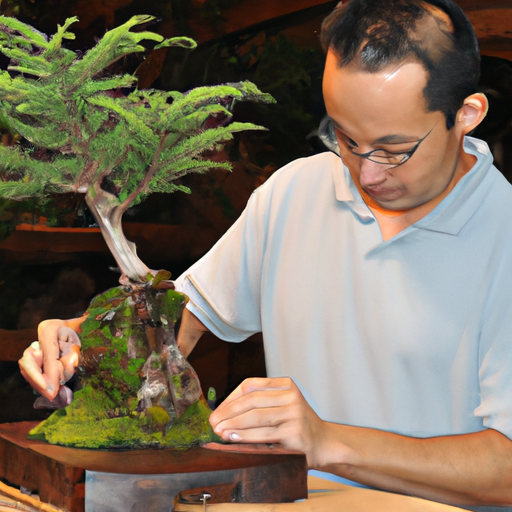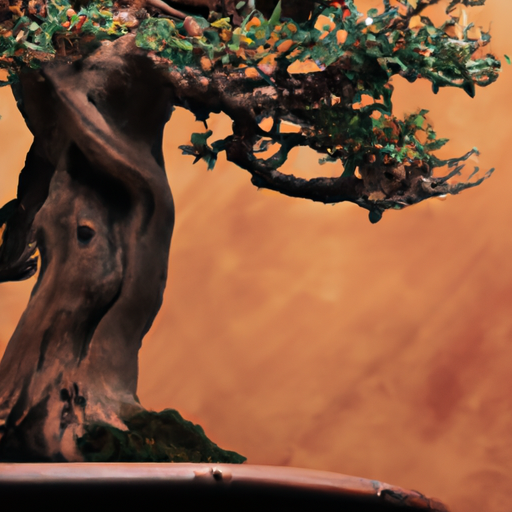In this article, you will learn about the art of Japanese pruning and get an overview of two traditional pruning techniques: Karikomi and Hako-zukuri. These techniques involve the use of specific tools and methods to create beautifully sculpted and structured plants. By understanding these techniques, you can elevate the beauty of your own garden and learn to appreciate the meticulousness and artistry behind Japanese pruning.
Karikomi is a pruning technique that involves shaping shrubs into soft, rounded forms. This technique uses tools such as shears or hedge trimmers to create precise cuts and smooth lines. The goal of Karikomi is to create a harmonious balance between the shrub and its surroundings, adding depth and texture to the overall landscape. Hako-zukuri, on the other hand, is a technique used to shape trees into box-like forms. This technique requires pruning from the top and sides to create a compact and geometric shape. Hako-zukuri trees are often seen in Japanese gardens and add a sense of structure and order to the space. Understanding these two techniques and the tools used for them can help you achieve a more intentional and visually appealing garden.

Traditional Japanese Pruning Techniques
What is Japanese pruning?
Japanese pruning, also known as niwaki, is a centuries-old technique that involves the careful shaping and grooming of trees and shrubs to create aesthetically pleasing and harmonious landscapes. It is not merely a functional process to maintain the health of plants, but a form of art that embodies the principles of Japanese garden design and culture.Brief history of Japanese pruning techniques
The roots of Japanese pruning techniques can be traced back to ancient Japan, where it was initially practiced in the temples and palaces to create serene and beautiful gardens. Over time, the art of pruning spread to the general population, with each region developing its own distinct style and techniques.Key principles of Japanese pruning
Japanese pruning is guided by several key principles:- Respecting the natural form: Pruners aim to enhance the natural shape and beauty of trees and shrubs rather than imposing rigid geometric shapes.
- Balance and harmony: Pruning is done with the goal of achieving a balanced and harmonious composition that blends seamlessly with the overall garden design.
- Selective pruning: Rather than indiscriminate removal of branches, Japanese pruning involves carefully selecting which branches to keep and which ones to remove, taking into consideration factors such as health, aesthetics, and long-term growth.
- Patience and craftsmanship: Japanese pruning requires patience, as each cut is made with precision and care. It is regarded as a form of craftsmanship that demands meticulous attention to detail.
Karikomi – Shaping the Landscape
Introduction to Karikomi
Karikomi is a traditional Japanese pruning technique used to shape large-scale landscapes, such as hedges and mass plantings. It involves the careful pruning of shrubs and trees in a way that creates a unified and textured appearance, transforming them into living sculptures.The importance of Karikomi in Japanese gardening
Karikomi plays a crucial role in Japanese gardening as it helps to define and create the overall structure and character of the landscape. It provides a sense of enclosure and privacy while adding depth and visual interest to the garden. Karikomi is often used to frame views, create focal points, and guide the flow of movement within the garden.Tools used for Karikomi pruning
To achieve the desired results, a few essential tools are required for Karikomi pruning. These include:- Shears: Pruning shears, also known as secateurs, are indispensable tools for precision cutting. They come in different sizes and shapes, allowing for a variety of cutting techniques.
- Pruning saw: A pruning saw is used to make larger cuts on thicker branches that cannot be easily handled by shears. Its sharp teeth make quick work of branches, ensuring clean and precise cuts.
- Loppers: Loppers are long-handled pruning tools with a scissor-like action designed for cutting thicker branches. They provide extra leverage and reach, making it easier to tackle branches that are out of reach.
Step-by-step process of Karikomi pruning
To start the Karikomi pruning process, follow these steps:- Assess the landscape: Begin by identifying the shape and form you want to achieve and visualize how it will fit into the overall garden design. Take into consideration the existing landscape elements and surrounding structures.
- Prune the outer edges: Start by removing any dead or diseased branches, as well as any branches that disrupt the desired shape. Trim the outer edges of the shrubs or trees to create clean lines and define the overall shape.
- Create texture and depth: To achieve a textured appearance, selectively prune branches throughout the shrub or tree, leaving some longer and others shorter. This creates layers of foliage and allows light to penetrate, giving the Karikomi a three-dimensional effect.
- Regular maintenance: Karikomi requires regular maintenance to preserve its shape and form. It is important to remove any new growth that disrupts the desired composition and maintain a clean and sculpted appearance.
Hako-zukuri – Art of Boxwood Pruning
Introduction to Hako-zukuri
Hako-zukuri is a specialized form of Japanese pruning that focuses on shaping and sculpting boxwood plants to create geometric forms. This technique is commonly used in formal gardens and adds an element of sophistication and elegance to the overall design.The significance of Hako-zukuri in Japanese garden design
Hako-zukuri plays a significant role in Japanese garden design by offering a contrast to the natural and organic shapes of other plants in the landscape. The precise and rigid forms created through Hako-zukuri provide a sense of order and discipline, reflecting the meticulousness and attention to detail found in Japanese culture.Tools required for Hako-zukuri pruning
To achieve the desired shapes and forms in Hako-zukuri, specific tools are needed:- Topiary shears: Topiary shears are essential for shaping and cutting boxwood plants. They have long, narrow blades that allow for precise trimming and shaping.
- Wire frames: Wire frames are often used to guide the shaping process in Hako-zukuri. These frames act as a visual reference and help maintain the desired form while the plant grows.
- Measuring tools: Accurate measurements are crucial for achieving symmetrical and proportional Hako-zukuri designs. Measuring tools such as rulers or measuring tapes are used to ensure precise cuts and shapes.
Techniques and tips for achieving the Hako-zukuri style
To achieve the desired Hako-zukuri style, follow these techniques and tips:- Start with a healthy plant: Begin with a healthy and properly pruned boxwood plant. Select a young plant with a compact and dense growth habit, as these are easier to shape and maintain.
- Visualize the desired form: Before starting, visualize the shape and form you want to achieve with the boxwood plant. Take inspiration from traditional Japanese designs or create your own unique pattern.
- Trim and shape gradually: Use the topiary shears to gradually trim and shape the boxwood plant, starting from the edges and working inward. Trim small sections at a time to maintain control and precision.
- Regular maintenance and pruning: Hako-zukuri requires regular maintenance to maintain the desired shape. Trim new growth regularly to prevent it from disrupting the overall design, and keep the edges clean and sharp.
Differences and Similarities between Karikomi and Hako-zukuri
Comparison of Karikomi and Hako-zukuri
Though both Karikomi and Hako-zukuri are forms of Japanese pruning, they differ in their techniques and purposes. Karikomi focuses on shaping large-scale landscapes, while Hako-zukuri specializes in sculpting boxwood plants into geometric forms.Distinct characteristics and purposes of each technique
Karikomi creates a textured and natural appearance, utilizing the natural form and growth patterns of shrubs and trees to create a harmonious landscape. On the other hand, Hako-zukuri employs precise shaping and pruning techniques to create rigid and geometric forms that add structure and order to the garden.Suitability of Karikomi and Hako-zukuri for different landscapes
Karikomi is suitable for a wide range of landscapes and garden styles, including both formal and informal settings. Its ability to create depth, texture, and movement makes it a versatile technique. On the other hand, Hako-zukuri is better suited for formal gardens or areas that require a more structured and disciplined design aesthetic.








